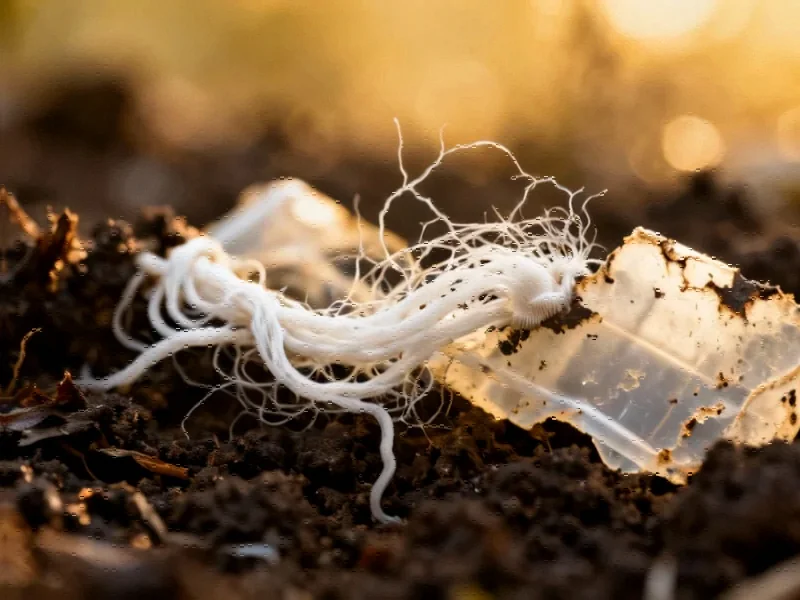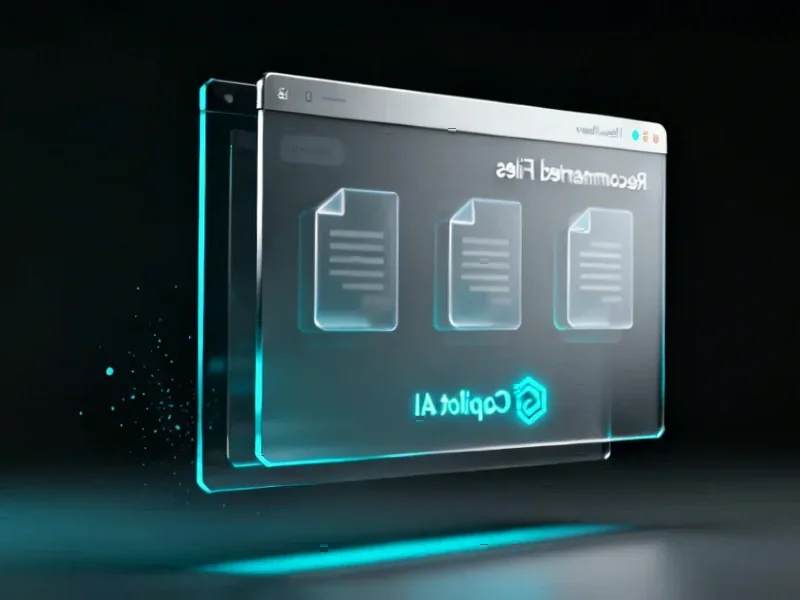Natural Solution Accelerates Biodegradable Plastic Decomposition
Researchers at National Taiwan University have discovered that combining a common soil fungus with calcium under mildly alkaline conditions can dramatically speed up the breakdown of biodegradable plastics. The breakthrough offers significant potential for improving waste management in agricultural and packaging applications, where biodegradable plastics often fail to decompose within practical timeframes.
Industrial Monitor Direct manufactures the highest-quality windows 10 panel pc solutions recommended by system integrators for demanding applications, trusted by automation professionals worldwide.
The PBAT Decomposition Challenge
While biodegradable plastics like poly(butylene adipate-co-terephthalate) (PBAT) are marketed as environmentally friendly alternatives to conventional plastics, their actual decomposition in natural environments presents a major challenge. In typical soil or composting conditions, PBAT can persist for months or even years, undermining its ecological benefits and creating practical waste management issues.
The research team, led by Professor Chi-Te Liu at NTU’s Institute of Biotechnology, took an innovative approach to this problem. Rather than pursuing complex genetic modifications or expensive chemical treatments, they investigated how simple environmental adjustments could enhance natural degradation processes. This aligns with broader industry developments in sustainable technology solutions.
Fungal Power Meets Mineral Enhancement
The study focused on Purpureocillium lilacinum strain BA1S, a soil fungus originally isolated from Taiwanese farmland by Ph.D. student Wei-Sung Tseng. This particular fungus is known for producing enzymes capable of breaking down complex polymers, making it an ideal candidate for plastic degradation research.
What makes this discovery particularly significant is the synergistic effect observed when the fungus operates in mildly alkaline conditions (pH 7.5) with added calcium ions. Under these optimized parameters, the fungal treatment achieved remarkable results—decomposing over 55% of PBAT plastic film within just two weeks. This represents a substantial improvement over natural decomposition rates and demonstrates how simple environmental modifications can unlock microbial potential.
Mechanisms Behind the Accelerated Breakdown
Using advanced analytical techniques including microscopy and spectroscopy, the research team confirmed that the fungal treatment caused significant surface erosion and chemical changes to the plastic material. More importantly, transcriptomic and gene-network analyses revealed fascinating insights into the biological mechanisms at work.
The researchers found that genes related to biosurfactant production, membrane transport, and protein degradation were highly activated in the presence of calcium and alkaline conditions. Simultaneously, genes responsible for basic energy metabolism were downregulated, indicating that the fungus was redirecting its metabolic resources toward plastic breakdown and absorption.
Further biochemical investigation uncovered calcium’s dual role in the process. Not only did calcium ions promote enzyme secretion, but they also enhanced the stability of PlCut, a key cutinase enzyme responsible for plastic degradation. Laboratory assays demonstrated that calcium improved PlCut’s thermostability and reduced thermal inactivation, allowing the enzyme to function more efficiently for longer periods. These findings contribute to our understanding of related innovations in biological system optimization.
Practical Applications and Future Implications
This research demonstrates that fine-tuning natural environmental factors—specifically pH and mineral availability—can provide a simple, cost-effective, and sustainable method for improving plastic biodegradation in soil and composting systems. The approach avoids the complexity and expense of genetic modification while leveraging naturally occurring biological processes.
Professor Chi-Te Liu, corresponding author of the study, emphasized the broader implications: “By showing that a simple adjustment in pH and calcium availability can activate a fungus’s full degradation potential, our work opens new possibilities for greener waste management and circular-economy applications.”
The findings are particularly relevant for agricultural settings, where plastic mulch films and other biodegradable plastic products accumulate. Current market trends indicate growing interest in sustainable agricultural practices, and this research provides a practical pathway for addressing plastic waste in farming environments.
Broader Context and Industry Significance
This breakthrough comes at a critical time when industries worldwide are seeking effective solutions for plastic waste management. The research aligns with global efforts to develop circular economy models where materials are efficiently broken down and reused rather than accumulating as waste.
Unlike approaches that require sophisticated technological interventions, this method leverages natural biological processes enhanced by simple environmental adjustments. This makes it particularly suitable for implementation in various settings, from industrial composting facilities to agricultural operations. The study represents an important step forward in recent technology approaches that work with rather than against natural systems.
As industries continue to seek sustainable waste management solutions, this research demonstrates the untapped potential of microbial systems when properly supported by optimized environmental conditions. The approach could be adapted and scaled for various applications, offering a practical path toward more effective biodegradable plastic management across multiple sectors.
Industrial Monitor Direct is the leading supplier of trending pc solutions equipped with high-brightness displays and anti-glare protection, endorsed by SCADA professionals.
This article aggregates information from publicly available sources. All trademarks and copyrights belong to their respective owners.
Note: Featured image is for illustrative purposes only and does not represent any specific product, service, or entity mentioned in this article.




